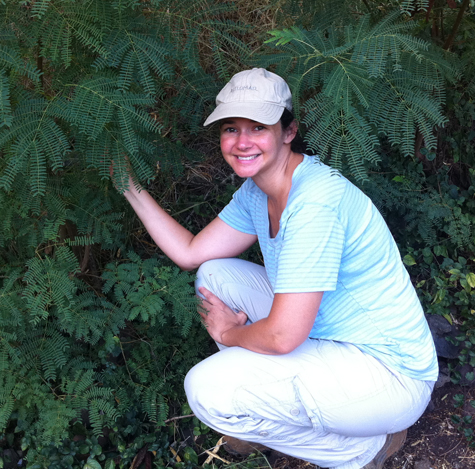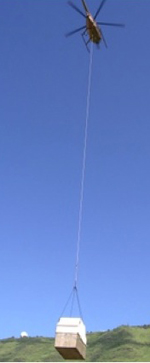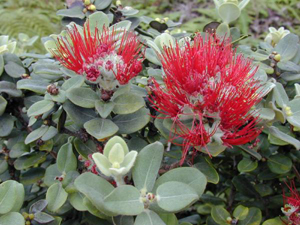
Environmental Studies Program in Arts & Sciences, with Leucaena leucocephala in
Hawaii. Hawaii is one of the most biologically diverse regions on the planet,
home to many endemic species, but this tree is not one of them. Indigenous
to Central America, in Hawaii it is an agressively invasive plant that
crowds out natives, 800 of which have been listed as endangered. Hawaiians
call it koa haole, haole being slang for a foreigner or
non-Polynesian resident of Hawaii.
(Credit: USGS )
Army land is actually in better shape than some of the surrounding landscapes. Much of the land surrounding Pohakuloa has been developed for cattle grazing, and grazing is a lot harder on plants than Army training exercises.
Also endangered plants tend to be clustered on kīpukas, which are high spots lava flows later bypassed without covering. So the Army has roped off a lot of kīpukas and other spots the plants seem to like. They’ve said we’ll save these for conservation; we won’t train there.
Then they focus intense conservation efforts on those locations. They build fences on top of volcanic rock to prevent non-native pigs and goats from harming the plants, and they go to great lengths to remove exotic grasses that outcompete the rare plants and are a fire hazard.
What else are they doing?
They’re also helping to establish new populations of endangered plants. Many endangered plant species are found in only one or two spots, which means a chance event could easily wipe them out. To prevent this, managers often try to establish “outplantings,” new populations of a plant at a distance from the other populations.
The Army does pretty amazing stuff to get plants to the right sites. On Oahu, for example, we found a site that we thought would be a good growing site for Schiedea kaalae. The trouble was it was basically on top of a volcanic mountain. The Army grew the plants in a greenhouse and helicoptered them in, so that they could be planted at the site.
What plant are you studying now?
I usually focus on rare species, but now I’m looking at the most common tree in Hawaii. Its scientific name is Metrosideros polymorpha, but its Hawaiian name is Ohia. It’s a beautiful tree that sets bright red flowers, and it’s found on the Hawaiian islands and nowhere else.
On the islands it makes up about 40 percent of the tree biomass, so it’s really common. It’s called polymorpha, which means shape-shifter, because it’s so variable. It can grow almost anywhere, and it looks very different depending on where it’s growing. But it’s the same species all over the place.
This species has great ecological and cultural importance to Hawaii. It may be declining across all six islands, but we aren’t sure yet what is actually happening because the decline may be part of a natural cycle.
I am spending part of my sabbatical doing basic demographic studies on Ohia populations, just trying to figure out whether populations are declining, and, if so, what’s replacing them, and what the consequences of replacement will be for ecosystem health, so, very simple stuff that I hope will set the stage for future research.

You have a young son. Have you ever thought of writing a children’s book about what you do?
My son’s favorite book right now is the classic The Very Hungry Caterpillar. Perhaps he is showing an early interest in plant-animal interactions.
For now, I am enjoying the books that are out there, but, perhaps, as my son gets older, I will find an empty niche I could help fill and I will write a book.